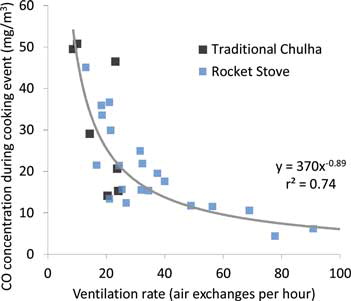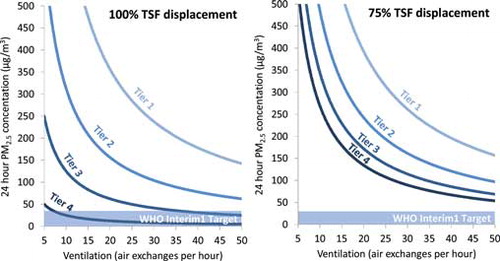Figures & data
Fig. 1 Kitchen concentration of carbon monoxide versus ventilation rate for homes in Southern India.

Fig. 2 Twenty-four-hour mean kitchen concentrations versus ventilation rate for different indoor emission performance levels.

Fig. 3 Framework for applying usage-performance-ventilation guidance. The first step for behavior intervention activities is to identify targets for improving air quality and fuel use and selecting the stove/fuel combination that addresses the context-specific needs, based on performance, usability, accessibility, and affordability. The usage-performance-ventilation guidance provided in this article can be used to identify the levels of usage, displacement, and ventilation needed to reach the selected targets with the selected technology. A set of behavior change strategies can then be selected that can meet these goals of usage, displacement, and ventilation. If the original targets cannot be achieved through any feasible combination of usage, displacement, and ventilation, the stove/fuel should be reconsidered. Other levers for improving air quality may also be considered. If these options are not possible, this framework still provides a realistic understanding of what targets can or cannot be reached. The results of behavior change activities can then be used to provide feedback for improving the computational model and developing more specific guidance on the likely effects of specific strategies.

